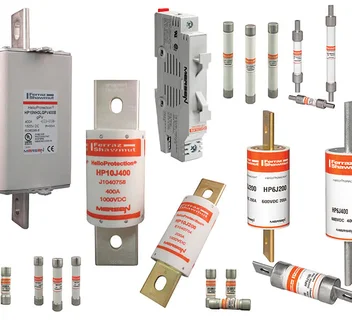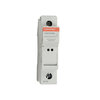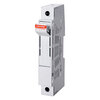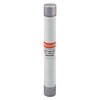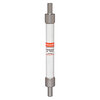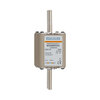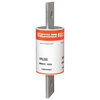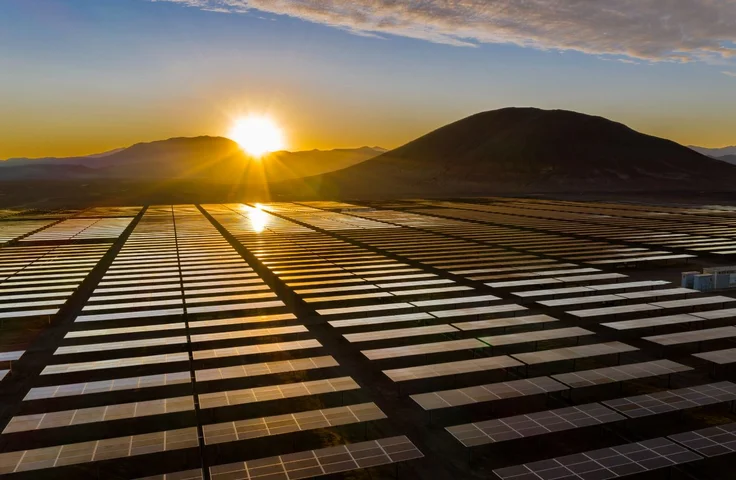
Convert sunlight into energy with Mersen
At Mersen, we're not just participating in the solar energy market; we're driving it forward.
Our innovative solutions in power solar conversion are setting new standards, showcasing our commitment to advancing sustainable energy for a brighter future.
And our graphite and carbon solutions are mandatory to manufacture solar cells.
-
Because we believe in a bright future
For several years, we have been supporting the transition towards sustainability. To achieve this, we are developing renewable energy solutions worldwide.-
2000.00 °C
Thermal resistance of Rigid carbon insulation
-
56.00 %
revenue for sustainable development
-
33.00 countries
Worldwide Presence of Mersen
-
-
Harnessing sunlight with innovative renewable energy solutions
Welcome to the exciting world of renewable energy solutions, where the marvels of technology in solar power conversion are revolutionizing how we utilize solar energy. In this realm, the journey of transforming sunlight into electricity is not just about technical processes; it's about innovation, efficiency, and sustainability coming together.
The solar combiner box plays a crucial role in efficiently managing the energy harvested from the sun, acting as a nerve center for solar panels.
Solar power conversion is the alchemy that turns solar rays into usable power, bridging the gap between nature's gift and our energy needs.
And Graphite, with its exceptional thermal properties and durability, plays a vital role in enhancing the performance and longevity of solar cells manufacturing.
As we delve into this fascinating world, we'll explore how these components are pivotal in shaping a sustainable future, making renewable energy not just a possibility, but a vibrant reality.
-
A game-changer in our solar projects
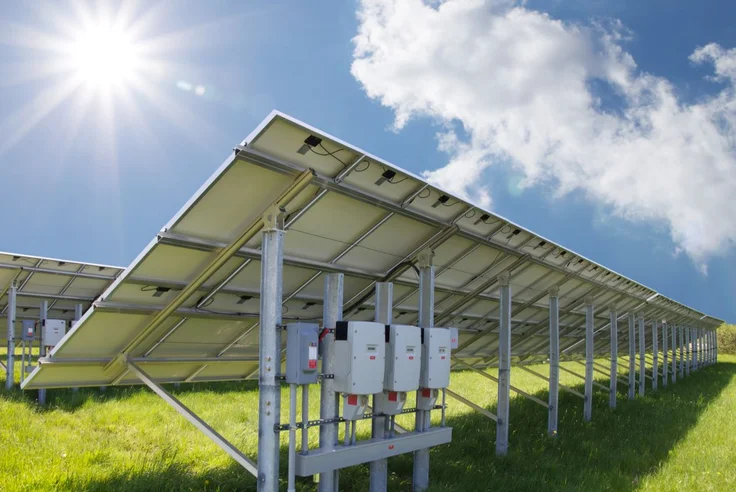
Margot Williams
CTO
I am thrilled to share our incredible journey with Mersen over the last five years.
We have been consistently impressed by the quality of the components we install in our junction boxes, and the teams’ deep expertise in solar energy has truly improved the efficiency of our projects. Even under challenging weather conditions, our installations have remained perfectly protected. -
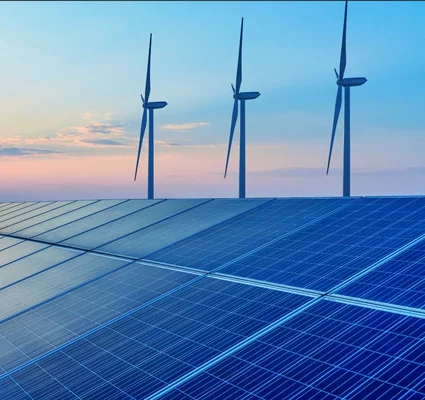
Solar Energy
What are renewable energy solutions?
Renewable energy solutions encompass technologies that harness energy from natural, sustainable sources, with solar power being a prime example.
As a leader in this field, Mersen significantly contributes to advancing solar technology. Our expertise extends to developing efficient and reliable solar components, including PV fuses, PV Surge Protection devices, fuse holders, and soft felt carbon insulation. Graphite, with its exceptional thermal properties and durability, plays a vital role in enhancing the performance and longevity of solar energy systems. Mersen's commitment to integrating advanced materials like graphite into solar cells manufacturing processes underscores our dedication to optimizing and advancing solar energy solutions.
-
How do Mersen's Graphite Heaters and Crucibles Enhance Solar Energy processes?
We understand the critical role that high-quality components play in the solar energy sector. Our graphite heaters and crucibles offer unparalleled efficiency in solar cell production.
What are the properties of using Mersen’s Graphite Heaters in Solar Cell Production?
Mersen’s graphite heaters are a testament to our commitment to innovation in solar technology. These heaters, designed in large-sized graphite blocs, exhibit exceptional temperature cohesion. This property is crucial in maintaining consistent thermal environments, essential for the high-precision processes involved in solar cell production. Our heaters ensure uniform heat distribution, a key factor in achieving optimal efficiency and quality in solar cell manufacturing.
How do Graphite Crucibles Contribute to the Efficiency of Solar Equipment Manufacturing?
Graphite crucibles, a vital component in the manufacturing of solar equipment, play a pivotal role in the melting and handling of silicon, the primary material in solar cells. Our crucibles are engineered and machined to withstand extreme temperatures while maintaining their structural integrity. This durability ensures a longer lifespan and consistent performance, directly contributing to the efficiency and cost-effectiveness of the solar equipment manufacturing process.
Why are Mersen's Graphite Solutions Critical for High-Quality Solar Cell Production?
The quality of solar cells hinges significantly on the purity and precision of the manufacturing process. Mersen's graphite solutions, including our heaters and crucibles, are designed to meet these stringent requirements. Our graphite products provide exceptional thermal stability and resistance to thermal shock, ensuring that the delicate process of solar cell production is carried out with the utmost precision and care, resulting in high-quality solar cells.
What Makes Mersen's Graphite Heaters and Crucibles Unique in Solar Energy Applications?
What sets Mersen's graphite heaters and crucibles apart in the solar energy sector is the unparalleled quality of our materials, coupled with our capability to supply large dimensions tailored to specific needs. Our products are not just components; they are a culmination of years of research and development, ensuring that they meet the high standards of the solar industry.
What are the properties of Mersen’s rigid carbon insulation and soft felt carbon insulation in renewable energy solutions?
Mersen’s rigid carbon insulation and soft felt carbon insulation are engineered for optimal performance in solar applications. These materials provide exceptional thermal insulation, crucial for maintaining efficiency in high-temperature processes. Our rigid carbon insulation offers durability and resistance to extreme conditions, while the soft felt variant ensures flexibility and adaptability to various shapes and sizes, catering to the diverse needs of the solar energy industry.
-
Mersen’s range of electrical protection for solar systems
-
PV Fuses
Engineered with precision, these fuses are designed to protect photovoltaic systems from overcurrents and short circuits, which are critical threats to the integrity and efficiency of solar installations. The design of our PV fuses ensures that they respond accurately to overcurrent conditions, providing immediate disconnection to prevent damage to solar cells and other sensitive components. -
PV Fuse Holders
Complementing our range of fuses, Mersen’s PV fuse holders are designed for easy installation and maintenance. They provide a secure and reliable connection, essential for the optimal functioning of solar combiner boxes and other solar energy equipment. Our PV fuse holders are crafted to work seamlessly with our extensive range of PV fuses, offering a complete protection solution. -
Surge Protection for Solar Systems
Our PV surge protection devices are specifically designed to shield solar systems from electrical surges. They play a crucial role in protecting sensitive solar equipment from voltage spikes, ensuring the safety and durability of the entire solar installation. Mersen’s surge protection solutions are a testament to our commitment to providing the highest level of protection for solar energy systems. -
Fuses for Solar Applications
Our PV fuses are characterized by their high breaking capacity and low power loss, making them highly efficient for solar applications. They are designed to withstand the unique environmental conditions of solar installations. This durability ensures that our fuses perform consistently over time, providing long-term protection for solar panels, inverters, and other critical components.
-
-
Questions on Rigid Carbon Insulation & Soft Felt Carbon Insulation
-
What distinguishes the form and structure of rigid carbon insulation from soft felt carbon insulation?
Rigid carbon insulation is a dense, homogeneous material that is made from a mixture of graphite and carbon fibers.
Soft felt carbon insulation is a loose, fibrous material that is made from a mixture of short carbon fibers.
-
How does thermal conductivity vary between rigid and soft felt carbon insulation?
While rigid carbon insulation offers specific benefits in thermal efficiency, soft felt carbon insulation is highly valued in the solar industry for its versatility and adaptability. Soft felt insulation, with its slightly higher thermal conductivity, excels in applications requiring flexibility and can be layered to achieve desired thermal performance. This makes it particularly suitable for solar applications, where custom fitting and enhanced thermal management are crucial. Users often prefer multiple layers of soft felt insulation to tailor the insulation properties to their specific needs.
-
Comparing the flexibility of rigid carbon insulation to soft felt carbon insulation?
The flexibility of soft felt carbon insulation is one of its most significant advantages, especially in the solar industry. It can be easily molded and shaped to fit complex geometries, offering a custom fit for unique solar energy applications. This flexibility, coupled with its ease of installation makes soft felt carbon insulation a preferred choice in photovoltaic applications for its practicality and user-friendliness. Plus, there is reduced risk of breakage compared to rigid panels. While rigid carbon insulation provides unmatched structural stability and is ideal for applications requiring rigidity and strength, such as heat treatment. It is the soft felt carbon insulation that truly excels in the solar sector due to its adaptability and ease of handling.
-
Understanding the density differences in rigid and soft felt carbon insulation
Rigid carbon insulation, with its higher density, offers robust structural support and is adept at maintaining its form under high temperatures, making it suitable for specific applications. However, it's important to note that this does not diminish the effectiveness of soft felt carbon insulation. Soft felt, while less dense, provides exceptional thermal efficiency, comparable to rigid insulation. Its lower density contributes to its flexibility and adaptability, making it an equally effective choice for a wide range of applications, including those in the solar industry where adaptability and ease of installation are key.
-
Evaluating thermal shock resistance in rigid vs. soft felt carbon insulation
Rigid carbon insulation offers superior resistance to thermal shock, making it ideal for environments with rapid temperature fluctuations. This resistance ensures longevity and reliability in harsh conditions. Soft felt carbon insulation, while slightly less resistant to thermal shock, compensates with its adaptability and ease of installation.
-
Porosity in rigid and soft felt carbon insulation: What are the implications?
The porosity of insulation materials affects their thermal properties and structural integrity. Mersen's rigid carbon insulation has lower porosity, enhancing its thermal efficiency and strength. Soft felt carbon insulation, with higher porosity, is suitable for applications requiring insulation to conform to irregular shapes.
-
Energy saving with rigid carbon insulation and soft felt carbon insulation
Effective insulation in a furnace plays an important role in reducing energy consumption, a benefit that becomes even more significant in setups with multiple furnaces. While worn insulation may not lead to emergency shutdowns, it can result in increased energy usage and potentially affect the quality of ingot production due to less controlled process temperatures. The consistent performance of Mersen' soft felt insulation materials ensures not only energy efficiency but also maintains the quality consistency in ingot production. This reliability makes our insulation solutions a wise investment for sustainable solar energy applications, where maintaining consistent production quality is as important as energy conservation.
-
-
Isostatic graphite and CFC composite : what’s the difference?
Isostatic graphite and Carbon-Carbon (CFC) composite are two advanced materials widely used in solar energy. Understanding the differences between these materials is crucial for professionals seeking the most effective solutions for their specific needs.
How does the density of isostatic graphite compare to CFC composite?
Isostatic graphite is characterized by its relatively low density due to the isostatic pressing process. It is valued in the solar energy sector for its light weight, which is about five times lighter than steel. This attribute, combined with its excellent thermal stability, makes it a preferred material for solar energy system components that require precision and effective heat management.
On the other hand, CFC (Carbon-Carbon) composite, reinforced with carbon fibers, offers an even lower density but with superior mechanical strength compared to isostatic graphite. This unique combination of lightness and strength makes CFC composite especially suitable for applications where reducing weight without sacrificing durability is necessary.
Comparing resistance to oxidation in isostatic graphite and CFC composite
In the solar energy market, both isostatic graphite and CFC composite are valued for their oxidation resistance, albeit through different mechanisms, making them suitable for various solar applications. Isostatic graphite's resistance to oxidation stems from its high crystallinity and low porosity. The well-ordered structure of graphite crystals forms a barrier against oxygen molecules, preventing them from reacting with the carbon atoms. Additionally, the minimal porosity of isostatic graphite inhibits moisture accumulation, further reducing oxidation risk. This makes it particularly suitable for high-temperature processes in solar energy systems.
CFC composite's oxidation resistance is attributed to the formation of a protective carbonaceous layer on its surface. This layer emerges when the carbon fibers in the composite react with oxygen, creating a thin carbon dioxide layer that acts as an impermeable shield against further oxygen infiltration and moisture diffusion. This characteristic renders CFC composite especially effective in humid and corrosive environments.
-
PECVD (Plasma Enhanced Chemical Vapor Deposition)
PECVD in renewable energy solutions
One of the primary applications of PECVD in solar technology is in the creation of anti-reflective layers on solar cells. These layers are crucial for maximizing the absorption of sunlight, a key factor in solar power conversion efficiency. The anti-reflective coatings applied via PECVD significantly reduce the amount of light that is reflected away from the solar cell, thereby increasing the amount of light absorbed and converted into electricity.

PECVD is also instrumental in depositing protective layers on solar cells. These layers serve to shield the delicate photovoltaic materials from environmental stressors such as moisture, UV radiation, and mechanical abrasion. By creating a robust barrier, PECVD helps extend the lifespan of solar cells.This protective capability is essential for maintaining the integrity and performance of solar energy systems.
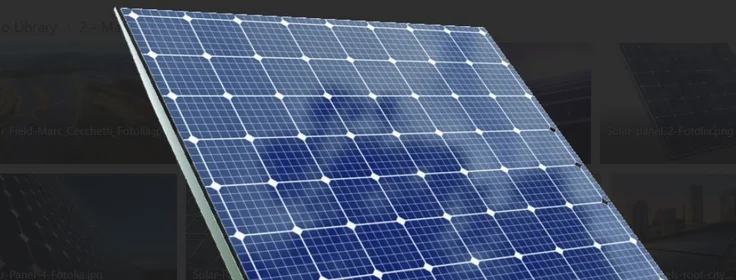
Through the precise deposition of thin films, PECVD technology allows for the fine-tuning of solar cell properties, such as electrical conductivity and light absorption. This optimization directly contributes to the improvement of solar cell efficiency, making PECVD an invaluable tool in the realm of renewable energy solutions.

-
What are the techniques to produce solar wafers ?
There are several advanced techniques used to produce high-quality solar wafers, essential components in solar power conversion. These techniques are important in the manufacturing of solar cells, which are the building blocks of solar panels.
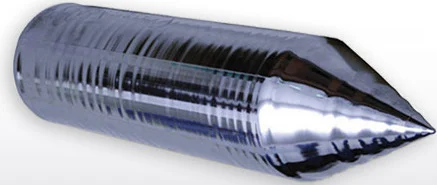
-
What is the Czochralski (CZ) process in solar wafer production?
The Czochralski (CZ) process is a widely used method for producing single-crystal silicon wafers, a key material in solar cells. In this process, a seed crystal of silicon is dipped into molten polysilicon. The seed is slowly withdrawn, pulling a cylindrical crystal of silicon with it. The crystal is then sliced into thin wafers. This technique is renowned for producing high-purity and high-quality wafers, making it a popular choice in solar wafer production.
How does the Direct Solidification System (DSS) method work for solar wafer manufacturing?
The Direct Solidification System (DSS) method is another technique used in solar wafer manufacturing. Unlike the CZ process, DSS involves directly casting molten silicon into square molds. As the silicon cools and solidifies, it forms a multi-crystalline structure. The solidified block is then cut into wafers.
Comparing CZ and DSS: which technique is more efficient for solar wafer production?
When comparing the CZ and DSS methods, each has its advantages. The CZ process is highly efficient in producing wafers with superior electronic properties, which is crucial for high-efficiency solar cells. The DSS method is more cost-effective and faster, making it suitable for large-scale production. In recent years, the CZ technique has become increasingly dominant in the solar industry, making it the most competitive.
How do CZ and DSS impact the quality and performance of solar wafers?
The quality and performance of solar wafers are significantly influenced by the production method. CZ-produced wafers, with their single-crystal structure, generally have higher efficiency and better electronic properties. In contrast, DSS wafers, while slightly less efficient, offer good quality at a lower cost, making them a viable option for many solar applications.
What are perovskite cells?
Perovskite cells are an emerging technology in the solar industry. They are named after the perovskite structure of the materials used in these cells. Perovskite cells are known for their high efficiency and lower production costs compared to traditional silicon cells. They represent a promising future in renewable energy solutions.
Are there emerging technologies in solar wafer production that compete with CZ and DSS?
There are emerging technologies in solar wafer production that offer competitive alternatives to traditional methods like CZ and DSS, particularly in the realm of thin-film solar cells. Technologies such as Copper Indium Gallium Selenide (CIGS) and Cadmium Telluride (CdTe) are gaining popularity in the solar panel industry. These thin-film methods, requiring less silicon, are not only cost-effective but also environmentally friendly..
-
How does solar power conversion work?
Solar power conversion is a sophisticated process that transforms sunlight into usable electrical energy, playing a pivotal role in renewable energy solutions. This process involves several key stages.
Solar Energy Collection with solar panels
The first step in solar power conversion is solar energy collection. Solar panels, composed of photovoltaic (PV) cells, absorb sunlight and convert it into direct current (DC) electricity. This conversion is made possible by the photovoltaic effect, where solar radiation excites electrons in the PV cells, creating an electrical current.
DC to AC Conversion for solar power conversion
Once DC electricity is generated by the solar panels, it needs to be converted into alternating current (AC) electricity, which is the standard form used in homes and businesses. This conversion is achieved using solar power inverters.
Combining and Protection such as Solar Combiner Box
In larger solar installations, multiple strings of solar panels are often used. A solar combiner box is employed to combine the output from these strings and provide overcurrent protection. The combiner box plays a vital role in enhancing the efficiency of solar power conversion by consolidating the energy output and ensuring the safety of the system.
Energy Storage
Energy storage is an essential component of solar power systems, especially for off-grid or hybrid systems. Batteries store excess energy produced during peak sunlight hours, which can then be used during periods of low sunlight or at night.
Connection to the Grid
Grid-tied solar systems connect to the electrical grid, allowing for excess energy distribution and often benefiting from net metering. This connection is a key aspect of solar power conversion, ensuring the efficient use and distribution of solar-generated electricity.
Monitoring and Management of solar energy
Effective monitoring and management systems are essential for optimizing the performance of solar power systems. These systems track energy production, usage, and efficiency, ensuring the solar system operates at its best. Modern solar systems often include smart monitoring technologies that provide real-time data on energy production and usage.
Protection from Surges and Overcurrent with Surge Protection Devices and Overcurrent Protection
Protecting a solar power system from electrical anomalies is crucial. PV surge protection devices safeguard the system from voltage spikes often caused by lightning or grid fluctuations. Similarly, solar BOS overcurrent protection ensures the system is safe from excessive current that could potentially cause damage.
System Grounding
Grounding provides a path for electrical currents to safely dissipate into the earth in the event of a fault, such as a lightning strike or power surge. This is vital in protecting not only the solar panels and solar combiner box but also the connected electrical appliances and, most importantly, the individuals operating or residing near the system. System grounding stabilizes the voltage levels of the solar power system. By grounding the system, we ensure that the entire setup operates at the same electrical potential as the earth, thereby minimizing the risk of electrical shocks or fires.
-
Why choose Mersen for your renewable energy solutions?
-
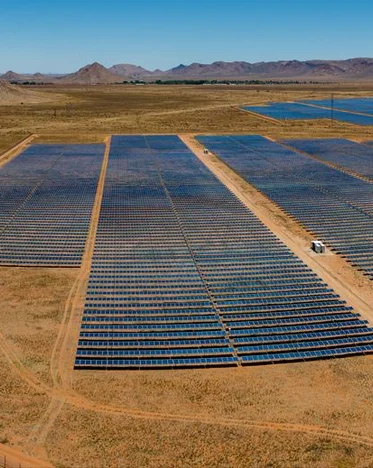
Expertise and experience
in renewable energy solutions
Mersen's expertise and experience in renewable energy solutions are unparalleled. Our high-temperature insulation solutions, such as rigid and soft felt carbon insulation, contribute significantly to energy savings, enhancing the overall efficiency of solar installations. With a profound level of knowledge in solar energy, Mersen is equipped to address the unique challenges of this industry, offering products and solutions that are not only effective but also sustainable.
-
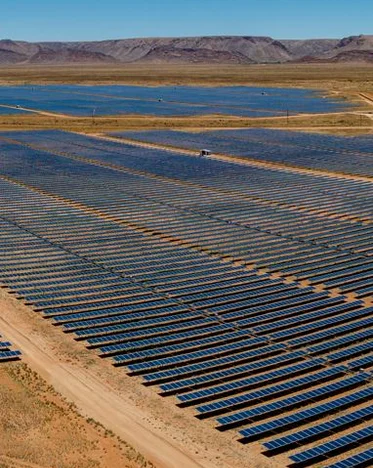
Customized solutions
for renewable energy
We provide several types of graphite materials, each tailored to meet specific requirements of the solar energy industry.
Whether it's for solar combiner boxes, PV surge protection devices, or solar BOS overcurrent protection, our products are designed to deliver optimal performance in various solar applications. This customization ensures that our clients receive solutions that are precisely aligned with their unique operational needs. -
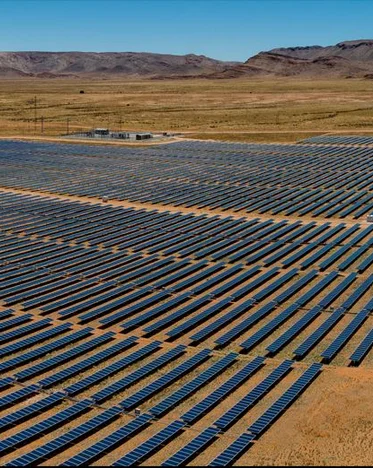
Innovation-Driven
for solar energy
Innovation is at the core of what we do. We are constantly developing high-quality materials for surge protection for photovoltaic systems. We explore new technologies to stay ahead in the renewable energy sector. Our ability to supply materials in very large dimensions sets us apart, allowing us to cater to a wide range of applications and requirements.
-
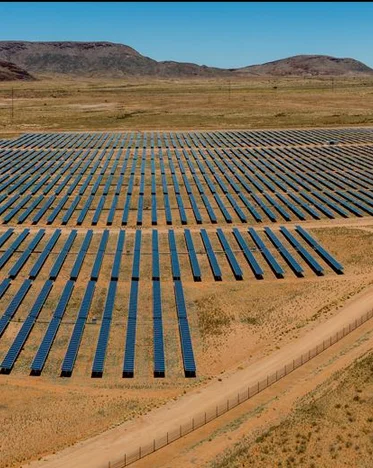
Proximity
with our partners
Mersen values its close relationships with all partners in the renewable energy sector, especially producers of photovoltaic (PV) cells. Our proximity to these key players allows us to stay attuned to the evolving needs of the industry and to respond swiftly and effectively. This close collaboration ensures that we are not just suppliers but trusted partners, working alongside our clients to advance the field of renewable energy.
-
-
Questions you might have about the Renewable Energy Solutions and Solar Power Conversion
-
Why is PECVD important in the manufacturing of solar panels?
PECVD, or Plasma Enhanced Chemical Vapor Deposition, is crucial in the manufacturing of solar panels as it is used to create anti-reflective coatings and protective layers on solar cells. These enhancements significantly improve the efficiency of solar power conversion by increasing light absorption and protecting the cells from environmental damage.
-
Are PV Surge Protection Devices unavoidable?
Yes, PV surge protection devices are essential components in solar power systems. They protect the system from voltage spikes caused by lightning strikes or grid fluctuations. Without these devices, solar power systems, including solar combiner boxes and inverters, are at risk of damage, which can lead to costly repairs and downtime. Therefore, incorporating PV fuses is a necessary step in ensuring the longevity and reliability of solar power systems.
-
What are the properties of soft felt carbon insulation ?
Carbon soft felt insulation exhibits several properties that make it highly suitable for use in solar energy applications, particularly in CZ ingot growth furnaces. It offers excellent thermal stability and resistance to thermal shock, while its low thermal conductivity is key in minimizing heat transfer. These attributes make soft felt carbon insulation an effective solution for maintaining controlled environments in the high-temperature processes of solar ingot growth.
-
Are solar power conversion equipment the same in a very sunny region and in a less sunny region?
In regions with high solar irradiance, solar panels and related equipment, including PV fuse holders and PV fuses, are often optimized for higher irradiance levels, maximizing energy production. This optimization might involve using solar combiner boxes designed for higher energy throughput. In less sunny regions, solar systems may include features like enhanced light absorption technologies to make the most of the available sunlight. Additionally, the sizing of the system, including energy storage solutions, might be adjusted based on the average sunlight exposure in the region to ensure consistent energy supply.
-
-
Solar energy
Need to get information on renewable energy solutions for solar panels?
-
PV Fuses
